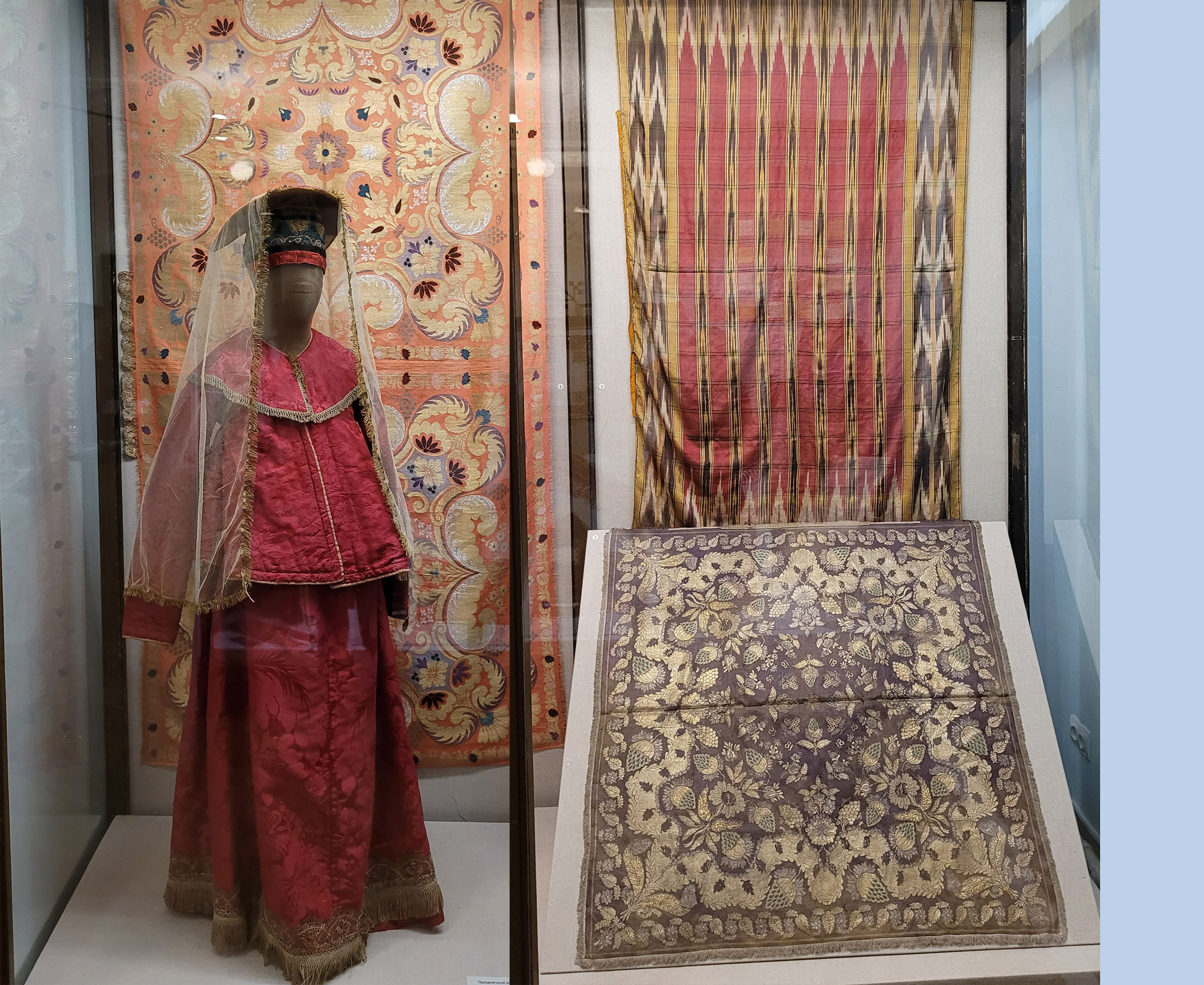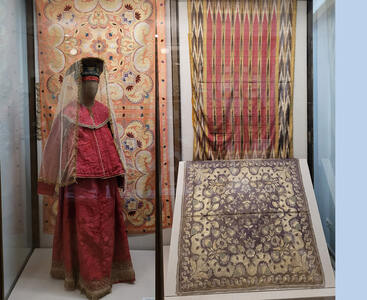Silk in the culture of Russian population of Russia’s Northern and Central Governorates

In the 19th century to early 20th century, a variety of silk fabrics, usually machine made in Russia, were primarily used in sarafan costume sets of girls and married women in the northern and central governorates of European Russia, the Urals, and Siberia. Silk was the fabric of choice for shirts, sarafans, skirts, short breast wear with straps or sleeves, outerwear, like shugai, pelerines, fur coats, and kaftans; silk fabrics were also used to cover headdress bases and undersides of fur coats.
One of the most vibrant and prominent elements of a young woman’s festive attire was a shawl that was fixed onto a headdress. Shawls were of considerable sizes; they would hug a headdress so that their ends dangled down freely, almost reaching the floor, often completely enveloping a woman’s silhouette. The folk tradition knows such items as headscarves, scarves, shawls, covers, qanawats (kanawats), or veils. Qanawats were especially popular; they presented striped or checkered fabrics of red shades with a pattern in the form of diamonds, rosettes, or bouquets created using a metal thread. Though made at Russian factories, they were inspired by oriental fabrics; the geography of qanawats’ popularity was quite vast.
Whether the Russian women’s costume incorporated store-bought fabrics, especially silk, or not, was determined by the material well-being of a family and the degree of ceremonialism of the situation it was worn to. Quite often young married women had their festive attires and wedding sets almost completely made of silk fabrics, like silk, damask, lustrine, taffeta, satin, velvet, brocade, brocatelle, etc., decorated with silk or passementerie ribbons.
A popular variant of a festive girl or woman’s costume was a sarafan and shugai set of a red patterned damask. The same damask was used for outerwear, hats, gloves, handbags, and to cover fur coats.
Young woman’s festive attire
Yaroslavl Governorate.
Mid-19th century. Russians
1. Wedding veil. European Russia. Late 18th — early 19th century. Russians
2. Wedding veil. Vologda Governorate. 19th century. Russians
3. Headcloth. Kostroma Governorate. 2nd half of the 19th century. Russians



